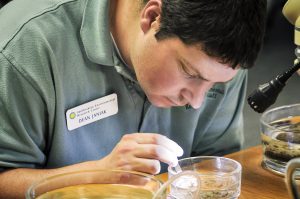This post was written by Brittney Falter, a graduate student at George Mason University and social media intern at the Smithsonian Libraries. Matilda Betham was born in 1776 and raised more »
Category: Digitization
Discover the wealth of information contained in the Freer and Sackler Galleries’ digitized publications. Spanning from 1753 to the present, these catalogues, journals, and manuscripts contain expert insights on a full spectrum of Asian art, culture, and history, as well as on American art and the history of the Galleries themselves.
This post was written by Brittney Falter, a graduate student at George Mason University and social media intern at the Smithsonian Libraries. Paul Laurence Dunbar was born in Dayton, Ohio more »
This post was written by Brittney Falter, a graduate student at George Mason University and social media intern at the Smithsonian Libraries. Le Garde-meuble, ancien et moderne (Furniture repository, ancient more »
The post was written by Mark Coulbourne, Towson University student and fall intern in the Smithsonian Libraries Research Annex.
For the Fall Semester I was an intern at the Smithsonian Libraries Research Annex (SLRA), and was tasked with evaluating 19th and early 20th century monographs for digitization. My work with librarian Daria Wingreen-Mason centered on the areas of photography, exploration, Alaska, and zoology.
This post was written by Brittney Falter, a graduate student at George Mason University and social media intern at the Smithsonian Libraries.
Walter Crane was born on the 15th August, 1845 in Liverpool, England. His father, Thomas, was a portrait painter, which allowed Walter to take an interest in art as a child. He would often work in his father’s studio and gained knowledge and experience of the artistic world. After his father’s death, Walter was offered an apprenticeship with William James Linton at his engraving shop.[1]

On the eastern coast of Florida, about 120 miles north of Miami, there is a very special research center: the Smithsonian Marine Station at Fort Pierce. It serves as a field station specializing in marine biodiversity and Florida ecosystems, especially that of the Indian River Lagoon – one of the most biologically-diverse estuaries in North America. The center is a destination for scientists around the world who are interested in studying the extraordinary biodiversity in the area as well as ocean and coastal processes at large.
